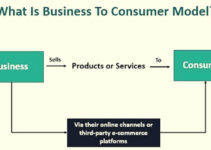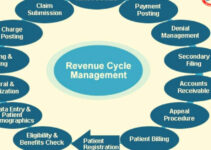Introduction
One of the primary goals of businesses and companies is to increase the market share. It’s easier said than done because the competitors in the market won’t allow you to disrupt their flow of demand and supply. However, many competitive strategies are risky, and market penetration is among the low-risk strategy. Today, we’ll discuss what is a market penetration strategy, how to calculate its rate, its good rate, its types, and its advantages and disadvantages.
What is a Market Penetration Strategy?
The market penetration strategy is one of the fourth strategies of the Ansoff Matrix along with product development, market development, and diversification strategy. Companies use the M penetration strategy to increase the sale and growth of their product in the current market by modifying the product. However, they also use it to amplify the customer base and business growth.
When companies introduce a new product to target other segments of the current market, then they implement the M penetration strategy. Generally, people consider the penetration strategy in two perspectives, either a measurement tool or an activity. The measurement allows them to estimate the sale and growth of the new product in terms of the total customer market.
How to Calculate Market Penetration Rate
After discussing what is a market penetration strategy, next how to calculate the M penetration rate, its formula as follows;
Market Penetration Rate = Total Number of Customers / Size of the Target Market * 100
The tricky thing in the abovementioned formula is to find the total size of the target market. For instance, if the product/service is an android application or software, then its target market would be the whole world. If you want accurate and precise calculations, then you should find the exact information of your product relevant to demographics (age, gender, income level, interests, culture, behavior, choices, etc)
Good Market Penetration Rate
A good M penetration rate depends on the two elements; product category and total addressable market (TAM). If you know the size of your target market, then just put the values in the formula, and you’ll find the M penetration rate.
For ordinary products, the average M penetration rate falls between 2% to 6%, and for business products, it falls within the range of 10% to 40%. Now, the question is how to know whether it’s good or bad. You should contrast the M penetration rate of the product with the average market rate in order to comprehend the difference. If it is low, then you should work on its improvement.
For example: the global M penetration rate of the smartphone companies are;
Types of Market Penetration Strategy with Examples
Some of the main types of M penetration strategies that companies and businesses use in their markets are as follows;
Modifying Existing Product
As the name implies you modify the quality of the product by using better industry standards. When we talk about improvement and modification, then a little modification is sufficient and admirable by customers. However, it helps companies to maintain the loyalty of customers over time and make them choose your product.
For instance, Financial Management Solution Inc. (FMSI) is a well-reputed financial service providing company in the US. The company planned to amplify its market share and income in a short time. First of all, the company conducted an in-depth market analysis to comprehend the needs and wants of the target market. After collecting market information, FMSI made remarkable decisions based on the information.
Buying-out Small Competitors
Buying out small competitors means that you use your company’s influence and financial resources to buy the small competitors in the industry. This strategy allows you to reduce the competition in the market and increase your product portfolio.
For instance, Facebook bought WhatsApp and Instagram and became the parent brand.
Strategic Alliance
A strategic alliance is a very good strategy to launch. It can be challenging because you have to create an alliance with the competitors’ companies that are operating in the same market. The goal of a strategic alliance like a Joint Venture is to contribute the resource for mutual benefits.
Starbucks is a world-renowned coffee brand, and Barnes & Noble is a stocks and books company. The two brands joined hands and established a strategic alliance of sharing the space to lower the spacing cost.
Adjusting Price for Existing Product
Adjusting the price for an existing product is the same strategy as the name implies where you charge a low price for the product than the competitors. It allows the company to gain the reputation of a low-cost producer and instantly increase the market share. The company can increase the price and profitability later.
Scaling your Presence in Market
There are many ways to scale a company’s presence in the market. They can do it by selling more products and amplifying the market share. For instance, whenever the market shakes up for Apple, the smartphone brand amplifies the sale of iPads, iPhone, and other products/services. The company also expands the size of its portfolio
Another strategy to scale a company’s market presence is to amplify the market campaigns in different countries; it would increase the company’s market share.
Promotional Efforts
One of the best expands brand awareness and approach customers are through marketing, advertisement, and promotional campaigns. It requires a lot of budgets to run marketing and promotional campaigns. Therefore, the short-term and longer marketing campaign depend on their budget.
Whatever marketing campaign you select for your company, should be well planned and thoughtful. It’s because the business environment is very competitive, any marketing mistake you make, and it would cost you money and resources.
Advantages of Market Penetration Strategy
Some of the main advantages of the market penetration strategy are as follows;
Fast Growth
The M penetration strategy helps you expand the market share through marketing and promotional campaigns. This way you can win the competition in the market and increase your database of customers.
Cost-Effective
When a company offers products/services at a lower price, then it attracts the attention of customers and that would amplify the sale and market share. The increasing production rate would reduce the manufacturing cost and make your cost-effective.
Competing with Competitors
Every market comprises various competitors in every industry, and they perform various efforts to expand their customer market share. If you want your business to survive the competition, then you have to launch marketing campaigns and offer low prices to attract the attention of customers.
Disadvantages of Market Penetration Strategy
Some of the main disadvantages of the M penetration strategy are as follows;
Production Cost
When you increase the production rate, then it doesn’t always result in the form of reduced production cost. If your manufacturing cost isn’t lower, then it would badly impact your profitability.
Lost Opportunities
Some status quo brands have a database of status-conscious customers. When such a company offers products at a lower price, then its status-oriented customers doubting the company as some type of cheap brand.
Negative Image
If the company has created a perception of being a luxury brand and has a database of status quo-conscious customers. The economical price offer would tarnish the company’s brand image and label it as a cheap brand.
Conclusion: What is Market Penetration Strategy?
After an in-depth study of what is a market penetration strategy, its types, and advantage, and disadvantages, we’ve realized that the M penetration is an effective strategy to compete in the market. If you want to implement it into your business, then you should keep in mind the pros and cons before applying it.

Ahsan Ali Shaw is an accomplished Business Writer, Analyst, and Public Speaker. Other than that, he’s a fun loving person.


